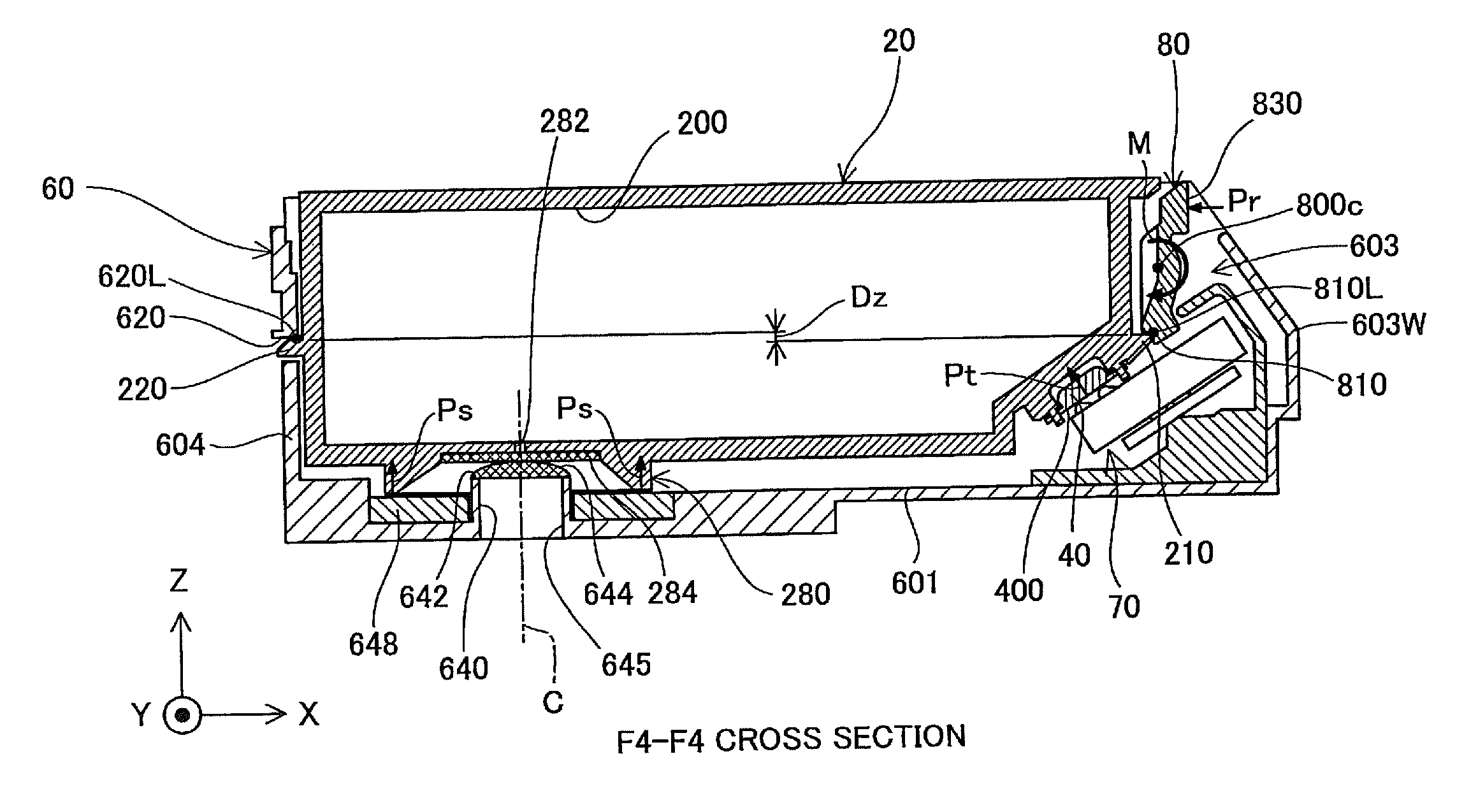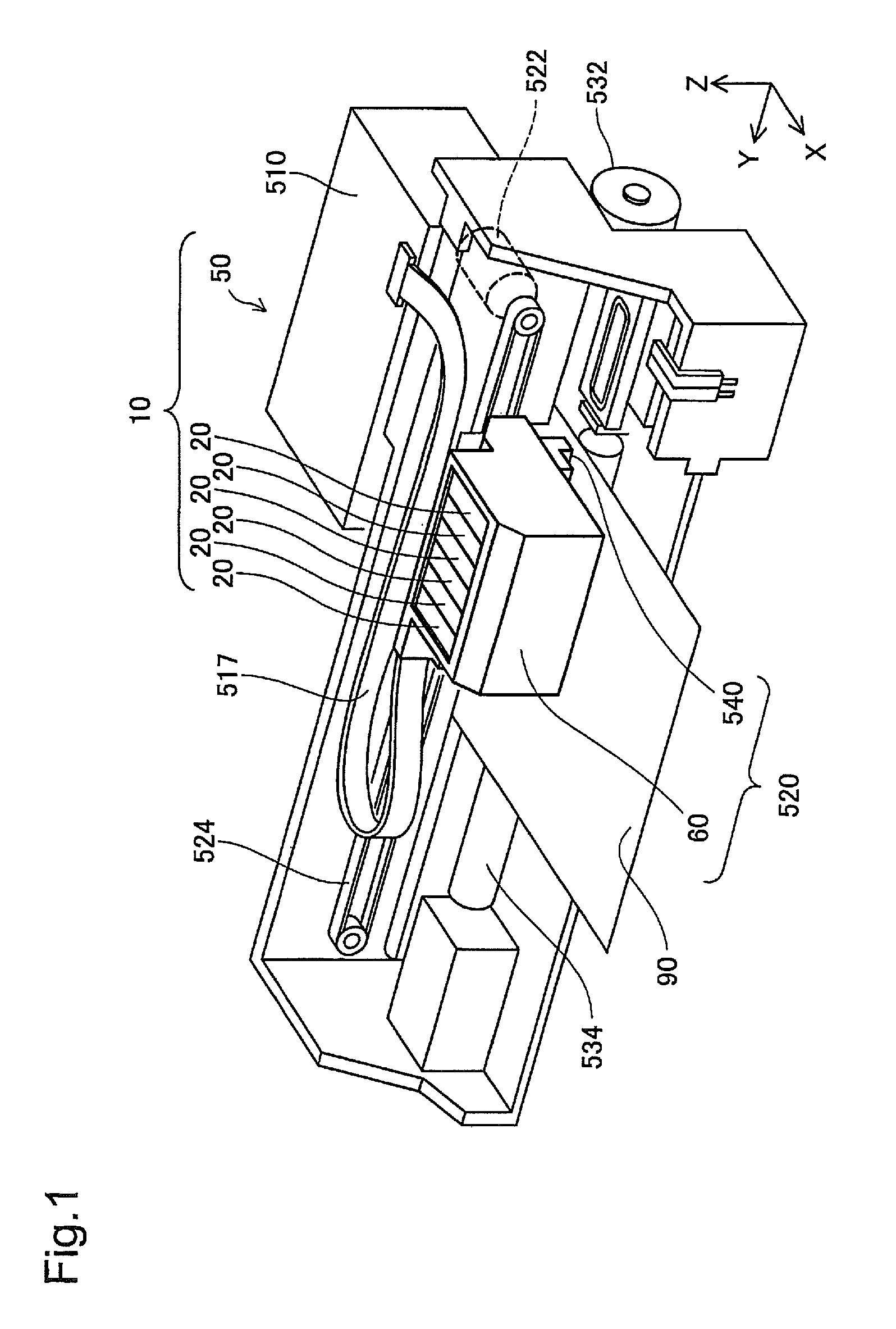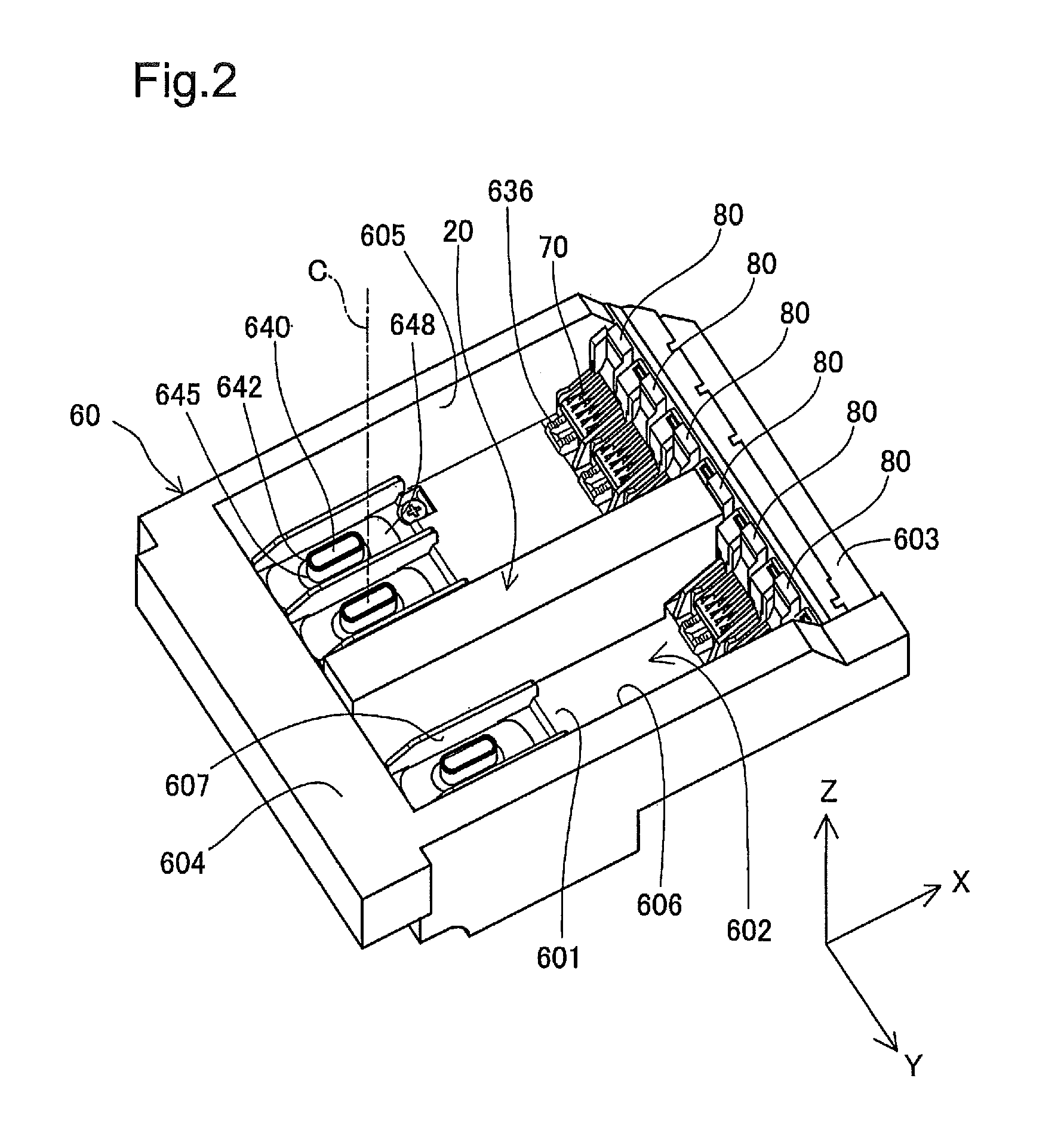Cartridge and printing material supply system
a technology of printing material supply and carriage, which is applied in the direction of printing and other printing apparatus, can solve the problems of increasing transportation and parts costs, increasing the cost of printing cartridges, and the material used to produce cartridges, so as to reduce the poor continuity, stable electrical connection, and stable electrical connection
- Summary
- Abstract
- Description
- Claims
- Application Information
AI Technical Summary
Benefits of technology
Problems solved by technology
Method used
Image
Examples
first embodiment
A. First Embodiment
[0156]A-1. General Configuration of Printing Material Supply System
[0157]FIG. 1 is a perspective view illustrating the configuration of a printing material supply system 10. XYZ axes orthogonal to one another are shown in FIG. 1. The XYZ axes in FIG. 1 correspond to the XYZ axes in the other drawings. In the subsequent drawings, the XYZ axes are shown when needed. The printing material supply system 10 includes cartridges 20 and a printer 50 serving as a printing device. In the printing material supply system 10, the cartridges 20 are removably attached to a holder 60 of the printer 50 by the user.
[0158]Each of the cartridges 20 in the printing material supply system 10 contains ink as a printing material. The ink as the printing material contained in the cartridge 20 is supplied through a ink supply structure and a printing material supply tube (described later) to a head 540. According to this embodiment, a plurality of the cartridges 20 are removably attached t...
third embodiment
C. Third Embodiment
[0373]FIG. 34 is a perspective view illustrating the appearance of a cartridge 20b according to a third embodiment. The difference from the cartridge 20 of the first embodiment (FIG. 7) is the size of the cartridge 20b. Otherwise the cartridge 20b of the third embodiment has the same structure as that of the cartridge 20 of the first embodiment. The like elements are expressed by the like symbols and are not specifically explained here. A printer of the third embodiment is adopted for the cartridge 20b but has the same structure as that of the holder 60 and the respective members (for example, lever 80) provided on the holder 60 of the first embodiment.
[0374]The cartridge 20b has the greater dimensions than those of the cartridge 20 of the first embodiment and is capable of containing a greater amount of ink. The cartridge 20b is attachable to a cartridge mounting structure of a large inkjet printer that is capable of printing large paper (e.g., sizes A2 to A0). T...
PUM
 Login to View More
Login to View More Abstract
Description
Claims
Application Information
 Login to View More
Login to View More - R&D
- Intellectual Property
- Life Sciences
- Materials
- Tech Scout
- Unparalleled Data Quality
- Higher Quality Content
- 60% Fewer Hallucinations
Browse by: Latest US Patents, China's latest patents, Technical Efficacy Thesaurus, Application Domain, Technology Topic, Popular Technical Reports.
© 2025 PatSnap. All rights reserved.Legal|Privacy policy|Modern Slavery Act Transparency Statement|Sitemap|About US| Contact US: help@patsnap.com



